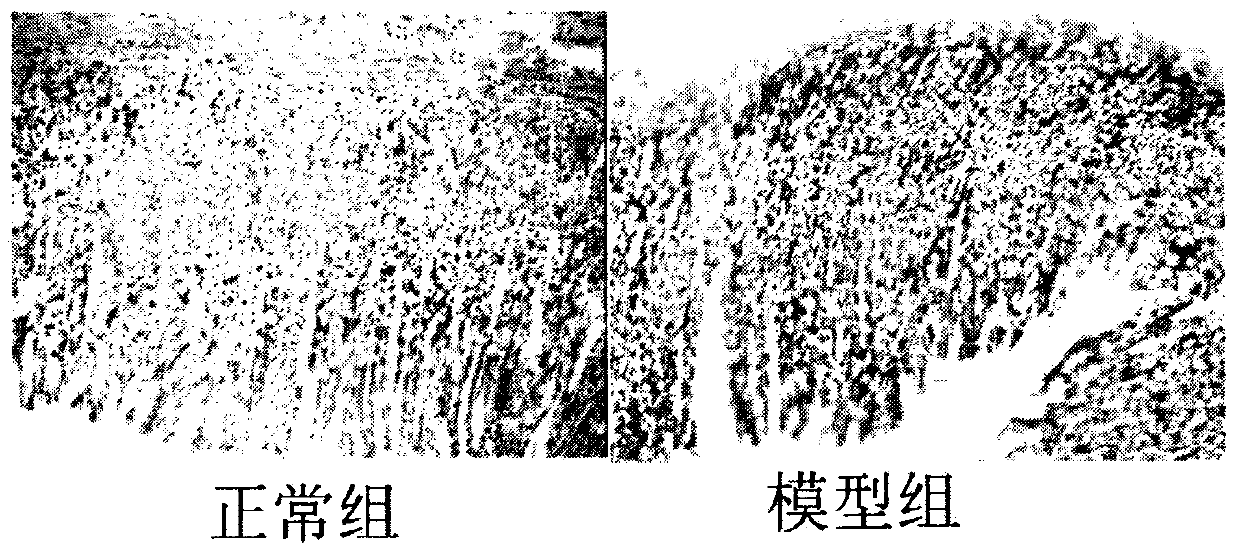Novel application of cortex magnoliae officinalis glycoside ingredient in improvement of gastrointestinal function
A technology of glycosides and Magnolia, applied in the field of medicine and health
- Summary
- Abstract
- Description
- Claims
- Application Information
AI Technical Summary
Problems solved by technology
Method used
Image
Examples
Embodiment 1
[0032] The extraction and separation of total glucosides of Magnolia officinalis, as described in Xue Zhenzhen's article (Phytochemistry, 2016, 127:50-62. DOI: 10.1016 / j.phytochem.2016.03.011).
[0033] (1) Magnolia officinalis dried bark 40kg, pulverized, heated and refluxed with 40L of 70% ethanol water and extracted 3 times.
[0034] (2) Concentrate the extract obtained from (1) ethanol-water extraction, and then extract three times with 30 L of ethyl acetate.
[0035] (3) The aqueous solution extracted in (2) was passed through a D101 macroporous resin column, eluted with 5 times column volume of distilled water to remove impurities, and then eluted with 5 times column volume of 20% ethanol water.
[0036] (4) Concentrate the 20% ethanol water eluate in (3) to dryness to obtain the total glycosides of magnolosides.
[0037] (5) Separating and purifying the total glycosides in (4), using 1 H NMR, 13 C NMR and mass spectrometry were used to identify 11 new phenylethanol g...
Embodiment 2
[0039] In order to evaluate the new application of magnolosides of the present invention, rats modeled with iodoacetamide (IAA) combined with eating every other day were selected for effect evaluation. 40 SPF-grade healthy male 7-day-old SD mice were provided by the Experimental Animal Center of the Academy of Military Medical Sciences, license number SCXK (Army) 2012-0004. With the approval of the Experimental Animal Welfare Committee, the animals were kept in the animal room of the Institute of Basic Theory, China Academy of Chinese Medical Sciences. water. All animals were adaptively fed for 3 days before the start of the experiment. Rats in the normal group were given 0.2 mL of 2% sucrose solution orally, once a day, and continued to build the model for 6 days; rats in the model group were given 0.2 mL of 0.1% IAA and 2% sucrose mixture, once a day, Continue modeling for 6 days. The young mice were weaned at the age of 3 weeks, and were fed normally until the age of 6 w...
Embodiment 3
[0045] Functional dyspepsia model rats were selected to study motilin, the target of magnolosides, as follows.
[0046] In order to evaluate the target of magnolosides of the present invention, rats modeled with iodoacetamide (IAA) combined with feeding every other day were selected for effect evaluation. 40 SPF-grade healthy male 7-day-old SD mice were provided by the Experimental Animal Center of the Academy of Military Medical Sciences, license number SCXK (Army) 2012-0004. With the approval of the Experimental Animal Welfare Committee, the animals were kept in the animal room of the Institute of Basic Theory, China Academy of Chinese Medical Sciences. water. All animals were adaptively fed for 3 days before the start of the experiment. Rats in the normal group were given 0.2 mL of 2% sucrose solution orally, once a day, and continued to build the model for 6 days; rats in the model group were given 0.2 mL of 0.1% IAA and 2% sucrose mixture, once a day, Continue modeling...
PUM
 Login to View More
Login to View More Abstract
Description
Claims
Application Information
 Login to View More
Login to View More - R&D
- Intellectual Property
- Life Sciences
- Materials
- Tech Scout
- Unparalleled Data Quality
- Higher Quality Content
- 60% Fewer Hallucinations
Browse by: Latest US Patents, China's latest patents, Technical Efficacy Thesaurus, Application Domain, Technology Topic, Popular Technical Reports.
© 2025 PatSnap. All rights reserved.Legal|Privacy policy|Modern Slavery Act Transparency Statement|Sitemap|About US| Contact US: help@patsnap.com



